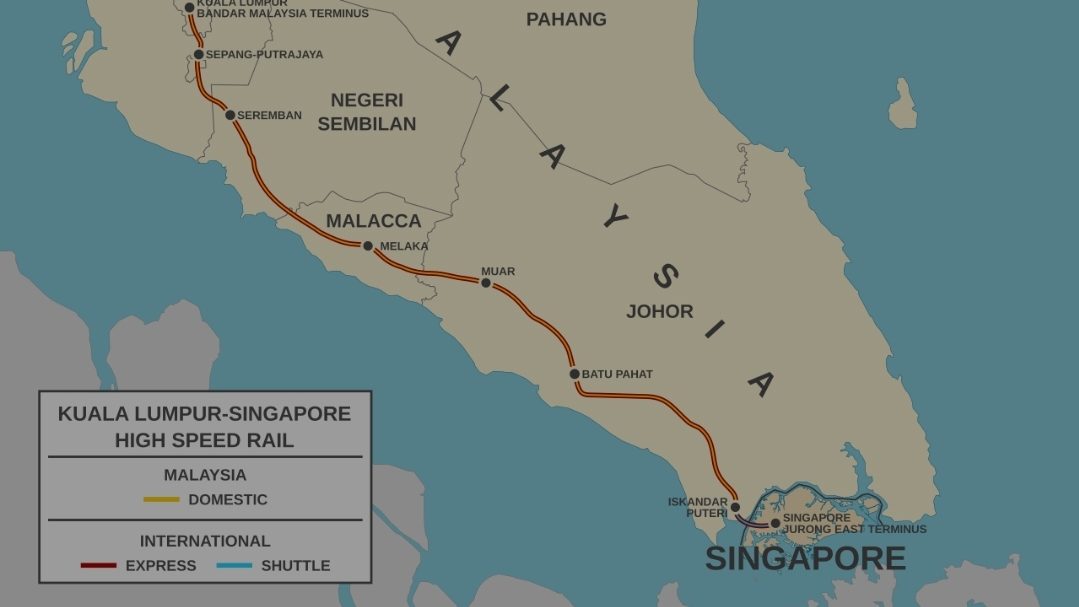Malaysian Resources Corporation Bhd (MRCB) has officially withdrawn from the Kuala Lumpur-Singapore high-speed rail (HSR) initiative, a significant step reflecting the company’s focus on financial prudence amid the economic uncertainties and risks inherent in large-scale infrastructure projects.
The decision has been seen by industry analysts as a calculated move rather than a retreat, with MRCB prioritizing long-term shareholder protection and sustainable growth.
The HSR project, which originally aimed to improve regional connectivity with planned stops across Malaysia and Singapore, has faced numerous setbacks since its inception in 2013. Political changes and shifting governmental priorities resulted in delays, including the termination of the project under the Pakatan Harapan government in 2018.
Despite these challenges, the project remains a long-term ambition for both nations, though the financial and governance risks associated with such megaprojects are substantial.
MRCB’s exit from the consortium, which was previously led by Berjaya Group, follows growing speculation that rival bids from YTL Construction and SIPP Rail could secure the development contract.
Financial analysts believe MRCB’s decision stems from careful risk evaluation, aimed at shielding the company and its key stakeholders, including the Employees Provident Fund and Retirement Fund Inc (KWAP), from the unpredictable losses that could arise from continued involvement in such a high-risk venture.
Large infrastructure projects such as the HSR require enormous upfront investments and long-term commitments. The risk exposure is high, especially in projects that have been delayed multiple times, and MRCB’s decision is seen as a prudent strategy for managing such risks. By stepping back, the company is ensuring that its financial health and that of its shareholders are preserved.
While MRCB has exited the core development phase, its withdrawal does not preclude future participation in the broader HSR ecosystem.
Industry experts believe the company may pursue downstream opportunities, such as property management, retail operations, and transit-oriented development (TOD), once the project advances to less risky operational stages.
MRCB’s past successes in TOD, particularly the Kuala Lumpur Sentral development, position it as a strong contender for these roles. Kuala Lumpur Sentral, Malaysia’s largest transit hub, exemplifies MRCB’s expertise in integrating urban development with transit systems. This background makes the company a valuable player in future collaborations within Malaysia’s transportation infrastructure should the HSR project progress to its operational phase.
Initially, the Kuala Lumpur-Singapore HSR was slated for completion in 2026, with an ambitious target of connecting key cities across Malaysia, including Putrajaya, Negeri Sembilan, Melaka, and Johor.
However, the political and economic landscape has shifted, leading to the project’s gradual suspension and eventual cancellation in 2018. Malaysia later compensated Singapore S$102.8 million for preliminary costs incurred before the project’s cessation.
Following MRCB’s formal withdrawal, the consortium now consists of Berjaya Rail Sdn Bhd, Keretapi Tanah Melayu Bhd, IJM Corp Bhd, Deutsche Bahn, Hitachi Rail, and Hyundai Rotem. These companies continue to explore development opportunities within the HSR initiative, with a focus on navigating the project’s evolving risks and uncertainties.
Malaysian market analysts say that MRCB’s exit points to the importance of balancing ambition with risk management in large infrastructure projects.

